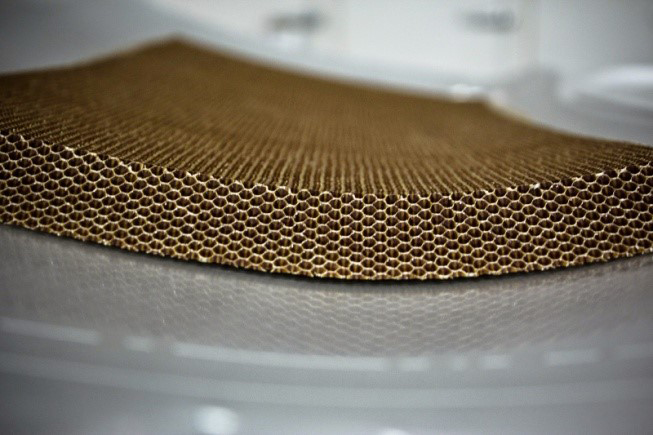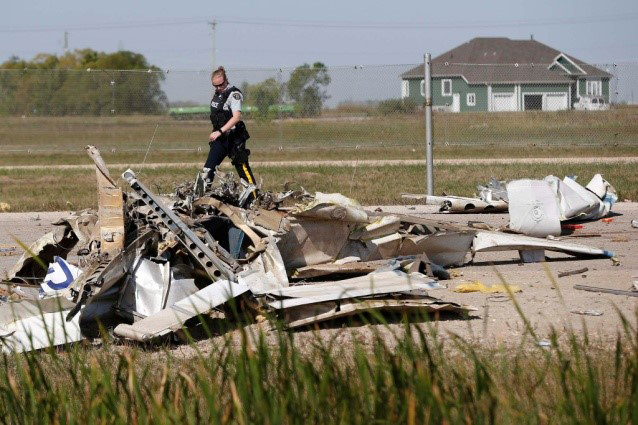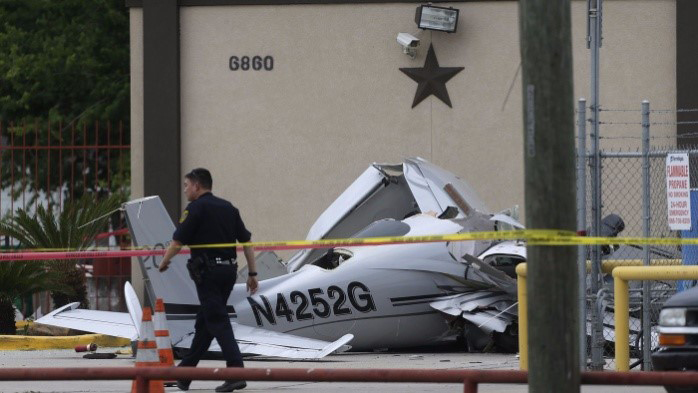Aircraft composite materials (ACM) are widely used in the aircraft industry and have allowed engineers the ability to create shapes and smoothness that affords greater aerodynamics while maintaining strength. There are a few concerns with these materials when ARFF stations respond to crashes and/or fire. The first is the rapid burn rate at which some of these composite materials burn and secondly post crash or fire, the fiber dispersion that is present. This month’s article will discuss the health and safety concerns for the aircraft rescue firefighter.

Composite Materials
Composite materials include a binder and a matrix. In the most simplistic and easy to acknowledge form—fiberglass—you have fiberglass cloth material (soft) and a liquid resin. When both materials are in their original state, they are neither usable for aircraft construction or considered a composite material—until we bind them together. When we apply hardener to the liquid resin, the soft fiberglass cloth begins to form a rigid shape as the physical property of the resin begins to harden. Both materials retain their identities within the composites and do not otherwise merge completely into one another. Together, these materials create a “hybrid” material that has improved shapes and structural properties. Common composite materials used on aircraft skin include fiberglass, carbon fiber, and fiber-reinforced matrix systems.
History of Composites
Fiberglass is the most common composite material used today and was first used in boats and automobiles around the 1950s. According to the Federal Aviation Administration (FAA), composite materials have been around since World War II. Over the years, this unique blend of material has become even more popular and today can be readily found in many different types of aircraft. Some aircraft can be made up of 50 percent or more in composite materials.

Fiberglass was first used in aviation by Boeing in passenger aircraft of the 1950s. When Boeing rolled out its new B787 Dreamliner in 2012, it boasted that their aircraft was made up of 50 percent composite materials. New aircraft coming off the line today almost all contain or incorporate some kind of composite material. Although composites continue to be used with great frequency in the aviation industry because of numerous advantages, some people think these composite materials also pose a safety risk to the aviation industry.

Advantages of Composite Material
Weight reduction is the single greatest advantage of composite material use and a the key factor in using it for an aircraft structure. Fiber-reinforced matrix systems are stronger than traditional aluminum found on most aircraft, and they provide a smooth surface and increase fuel economy, which is a huge benefit. Furthermore, composite materials don’t corrode as easily as other types of structural material. They don’t crack from metal fatigue, and they hold up well in structural flexing environments. Composite designs also last longer than aluminum, which means less maintenance for appearance and overall repair costs.
Composite Disadvantages
Because composite materials don’t break easily, it can make it hard to tell if the interior structure has been damaged internally. The lack of internal assurance makes this a major concern or disadvantage for using composite materials. In comparison, aluminum bends and dents fairly easily, and it is quite easy to detect structural damage. Additionally, repairs to composite materials can be much more difficult when the surface is damaged, which ultimately becomes very costly. Also, the resin used in composite materials will weaken at temperatures as low as 150°F, making it important for composite aircraft to take extra precautions to avoid fire. Fires involving composite materials release toxic fumes and microparticles into the air, causing serious health risks. Temperatures at or above 300° can easily cause structural failure.

Fiber Dispersion
After an aircraft crash and damage caused to the composite materials, the binder and the matrix can be torn open, allowing the fibers to be dispersed at the accident site. These fibers have been known to cause respiratory illness (acute and chronic) and can manifest into lung cancer. Firefighters and EMS personnel are aware of the concerns of toxic gases found gases in the by-product of combustion. Carbon monoxide, hydrogen cyanide, etc. are well known gases that firefighters use air monitoring meters to measure after fire extinguishment at the traditional house fire. This air monitoring process is often done to determine if firefighters on scene must wear SCBA during fireground operations or fire investigations. Air monitoring is done to determine if a known gas is present. In the ARFF industry, there has not been a meter designed to measure fiber dispersion. Therefore when you are operating a known composite material aircraft incident, the incident commander must maintain use of SCBA at all times in and around the aircraft. Wind direction and air speed must be taken into consideration so ARFF responders, ARFF vehicles, EMS care providers, patient treatment areas, and/or any support services like staging, rehabilitation, and canteens are not positioned in the fiber dispersion zone.
Firefighters that must work in this area are required to wear SCBA at all times. Acutely, firefighters exposed to fiber dispersion have suffered respiratory difficulty similar to the rapid onset of asthma. They were unable to catch their breath and had low oxygenation saturation levels. This respiratory threat can exacerbate other underlying medical conditions as well. Long-term chronic illnesses from fiber dispersion exposure include microfibers that our body can’t filter. The human body constantly tries to filter the air quality coming into our lungs. High levels of microfibers that make it to our lungs can attack and manifest into a mass or tumor. Long-term prognosis is eventually lung cancer for many who work in environments with fiber exposures. Our NIOSH approved respiratory protection equipment—SCBA—will 100 percent prevent fiber dispersion from becoming a reality for many ARFF personnel.

Aircraft (Fiber Dispersion) Stabilization
The United States Air Force has an aircraft recovery team (ART) that can be dispatched when they have a known fiber dispersion hazard. This team of specially trained personnel, don hazmat suits and wear respiratory protection when stabilizing an aircraft that has composite materials that have been ripped, have torn, or have broken open. Often the recovery team will use a liquid, commercial-grade floor wax to seal the aircraft. This “sealing effect” of fibers is done in a manner similar to painting a vehicle. The aircraft is sprayed with liquid wax and allowed to dry. During this process, the buildup of wax seals any fibers from freely floating into the air during aircraft recovery and during investigation back at the aircraft hangar. This process is not a requirement for civilian aircraft recovery teams, but the practice should be highly considered by all ARFF personnel and the incident commander if personnel are going to be exposed to any known potential fibers.
When operating around any known composite aircraft and fiber dispersion, when in doubt, wear your SCBA and protect your respiratory system. This, in turn, will afford you and your family a long, healthy retirement. Stay safe my friends, Chief Billy Greenwood.
WILLIAM GREENWOOD is a 24-year veteran of volunteer, paid-call, and career fire departments. He is the training chief of the Manchester-Boston Airport Fire Department. He is lieutenant with the Keene (NH) fire Department and a senior staff instructor with the New Hampshire Fire Academy. He has been published in Fire Engineering and hosts “Tap the Box” on Fire Engineering Talk Radio.

